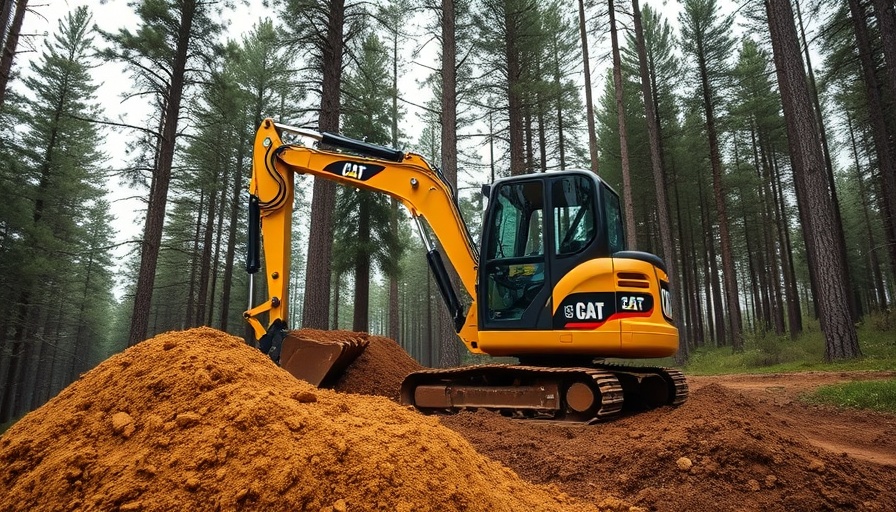
The Future of Mini Excavators: Cat’s Speed Revolution
In the competitive realm of construction and compact machinery, speed usually translates to efficiency and productivity. Caterpillar has secured its position as a formidable player with the recent software update to its 303.5 CR Mini Excavator, which has made waves in the industry.
What’s New? Understanding the Performance Upgrade
The 2025 version of the Cat 303.5 CR Mini Excavator boasts a staggering 35% boost in productivity and a 25% increase in transient speed. As Greg Worley, a market professional for Cat mini excavators, explains, this increase isn’t about reaching a higher top speed but rather about how quickly the machine can accelerate from standstill to its optimal operating speed.
This dynamic capability enables construction crews to reposition the excavator swiftly, allowing for fewer pauses and maximizing work time. With a top speed of 2.8 mph, this mini excavator can now respond faster to job site demands, a critical factor for contractors looking to optimize their workflow.
Core Features That Make a Difference
In addition to speed improvements, the Cat 303.5 CR comes equipped with features tailored to enhance its usability on job sites. Notable specifications include:
- Heavy Lifting Capability: The excavator can lift, swing, and carry a standard 2,450-pound street plate, making it suitable for various tasks.
- Compact Radius Swing: This design allows it to work efficiently in tighter spaces, reducing overhang and maximizing usability in crowded job sites.
- Stick Steer Travel Mode: An optional feature that simplifies operations by allowing operators to use joystick controls, enhancing maneuverability compared to traditional levers and pedals.
- Comfortable Cab: Operators can choose between a canopy or a pressurized cab equipped with air conditioning and ergonomic features to ensure comfortable working conditions.
Beyond the Numbers: Practical Insights for Contractors
For contractors, these advancements translate into tangible benefits at the job site. The improved transient speed reduces the downtime of the excavator, meaning workers are less likely to idle between tasks. This improvement is crucial, especially when managing multiple projects or working under tight deadlines.
Furthermore, the accessibility of service checkpoints from ground level means maintenance can be performed more efficiently, saving contractors both time and money in their equipment upkeep. This ease of service aligns with the growing demand for productivity in the ever-competitive construction sector.
Emphasizing the Importance of Upgrades in a Competitive Market
The construction equipment market is evolving rapidly, with companies like Caterpillar leading the way. The ability to integrate software updates that enhance performance resonates with contractors who prioritize productivity and efficiency. The fact that this update is compatible with models from 2021 and onward signifies Caterpillar's commitment to its customers and to sustainability through better resource utilization.
Final Thoughts: Staying Ahead with Innovative Equipment
As the construction industry continues to embrace technological advancements, understanding and utilizing upgraded equipment like the Cat 303.5 CR Mini Excavator can make a significant difference in project outcomes. Investing in machines that offer both speed and reliability means contractors can not only secure more jobs but complete them more efficiently.
For those interested in enhancing their operational capacity, staying informed about the latest machinery developments is key. Cat encourages contractors to reach out to their local dealers to explore these updates and uncover how they can improve their project delivery.
 Add Row
Add Row  Add
Add 




Write A Comment